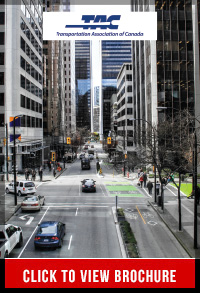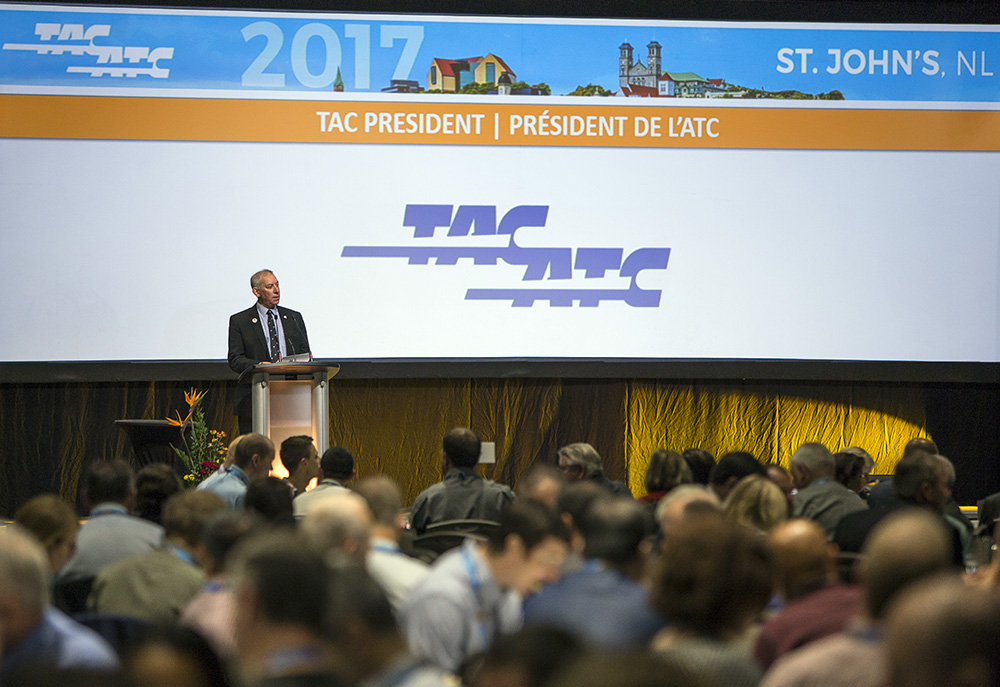Improving Canada’s Transportation and Mobility
By Anna Guy
 The Transportation Association of Canada (TAC) is a not-for-profit, national technical association that focuses on road and highway infrastructure and urban transportation with over 500 corporate members in all levels of government, private sector companies, academic institutions, and other associations.
The Transportation Association of Canada (TAC) is a not-for-profit, national technical association that focuses on road and highway infrastructure and urban transportation with over 500 corporate members in all levels of government, private sector companies, academic institutions, and other associations.
When TAC was founded in 1914—yes, over a century ago—there were 50,000 motor vehicles in Canada.
With prescience that perhaps they could not have even imagined at the time, the visionaries who founded what was then called the Dominion Good Roads Association realized that Canada needed better roads to accommodate the revolution that was coming with the advent of the automobile. Only 29 years after the completion of the National Railroad, the Association’s focus was the establishment of a superior national road network and was a significant force behind construction of the Trans-Canada Highway.
Now in its second century, TAC has always promoted the importance of efficient and effective transportation, which it articulates in its vision of “Transportation that makes Canada safe, healthy and prosperous.”
The Road to Prosperity
Today, Canada has over one million kilometres of road, and 20 million cars, 750,000 medium and heavy trucks, as well as buses, motorcycles, bicycles, and pedestrians. The work done by TAC to address critical and emerging issues in the transportation sector, and develop technical guidelines to support its members who plan, design, construct, manage, operate and maintain road, highway and urban transportation infrastructure systems and services, helps keep us safe and makes a significant contribution to the economy in this country.
Despite great geographic and social diversity, TAC is able to serve its members to meet, to work together, to collaborate and communicate on shared interests.
“It’s true that Canada is both blessed and challenged with vast amounts of land, diverse geography and characteristics of different regions, however, it’s also remarkable how much common ground exists when people come together to share perspectives and experiences,” says TAC Executive Director, Sarah Wells.
TAC convenes two major events every year, one in the spring, and another in the fall at locations that alternate between the east and west each year. “In conjunction with our conference and exhibition, which is the largest annual transportation-focussed conference in Canada, over the course of several days, 1,000 or more experts gather to learn and debate leading-edge research and the state of practice in the industry,” says Wells.
One such topic is the changing face of automobiles. “It is interesting to reflect that TAC’s origins were in a time, about a century ago, when the country needed to be ready for the revolution in transportation that was the automobile. One hundred years later, we’re on the cusp of another revolution in transportation and mobility that will be driven again by changing technology. Transportation professionals have always been innovative and taken advantage of the latest technology to do their work, but we are really seeing a revolution happening in the industry now, which is an exciting and challenging focus for TAC members.”
Wells says that innovation and technological developments may have potentially profound impacts on demand for, and construction, operation, maintenance and delivery of, infrastructure and services. “The future will look different than the present as intelligent systems, automated and connected vehicles, unmanned aerial vehicles, and electrification initiatives change transportation and mobility as we know it. Connectivity also means vast amounts of data are generated that offer potential to improve transportation, but processing and analyzing the data to make them useful to decision-makers and understood by the public, is a challenge to address.”
Guiding the Industry
In order to best address issues pertinent to its members such as this, TAC recently adopted a new strategic plan which focuses the Association’s technical work on safety, mobility, infrastructure and asset management, environment and climate change, technology, and workforce development. 2017 also saw the Association achieve major milestones with the release of several vital industry reference guidelines. The first was the release of a new edition of the Geometric Design Guide for Canadian Roads, the culmination of a three-year, million-dollar-plus project involving transportation agencies, consultants, and academics. The first full new edition since 1999, the guide signals significant change in the industry knowledge base and its subsequent approach to design; an important evolution is increased attention to active transportation, pedestrian-integrated design and cycle-integrated design.
TAC also released Guidelines for Defining and Measuring Urban Congestion, developed to assist practitioners and researchers in defining, measuring and monitoring traffic congestion in urban areas on freeway and arterial corridors, and can be applied for motorized roadway transportation, including public transit mixed with other motorized modes of transportation. Work is currently in progress on a new edition of the Manual of Uniform Traffic Control Devices for Canada, which is a comprehensive collection of the road signs, traffic signals and pavement markings used across Canada, another fundamental transportation engineering reference maintained by TAC.
Passion for Transportation
TAC will continue to serve its members and work with them to ensure Canada is ready for the future with a transportation system that supports and benefits Canadians and our economy. Wells says, “TAC’s members’ interests are broad and cover a wide range of topics. At the core of their work, and of TAC’s work, is a passion for improving transportation and mobility, which have significant impacts on Canada’s social, environmental and economic well-being. Truly, the vision of transportation that makes Canada safe, healthy and prosperous inspires us in our collaborative work and we welcome others with shared interests to participate in the Association and our events.”






